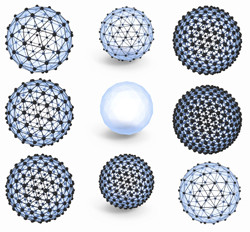Novel nanoparticles — Structure and dynamics
Polymer nanoparticles and nanocomposites are changing the face of products in numerous fields. Until now, most have had uniform or core/shell structures, and scientists have primarily characterised their equilibrium properties. A large EU consortium of research groups, industrial partners, and small and medium-sized enterprises with cross-disciplinary expertise is creating novel hierarchical nanocomposites and studying their structural dynamics with EU support of the project NANOS3(opens in new window). The focus is on soft nanoparticles and the training and promotion of qualified research project managers for a lasting contribution to the field. The first line of research targets development of novel synthetic routes to hierarchically structured responsive nanoparticles from synthetic and natural polymers. Important progress has already been achieved within the first reporting period. Highlights include synthesis of a number of block copolymers with controlled properties to act as building blocks and novel responsive host-guest polymers based on dextran, a natural polymer of glucose. A single-pot synthesis method was created to prepare core/shell microgel nanoparticles. Scientists are currently studying the temporal dynamics of polymer nanoparticles, polymersomes (capsules with shells having both hydrophilic and hydrophobic portions), and polyelectrolyte complexes prepared during the first period. In particular, researchers have followed the kinetics of particle formation during mixing of strongly interacting components. Insight has been gained into structural changes, aggregation and temperature responses of polyelectrolyte complexes, including those with ionic and non-ionic surfactants and block copolymers. In addition to the dynamics of particle formation, the team is interested in interfacial dynamics critical to the structure and function of the hierarchical polymer nanocomposites. Researchers have applied advanced techniques to better understand the response kinetics, lubricating properties and non-equilibrium mechanisms in a variety of both synthetic and natural systems. All fellows are pursuing PhDs and have benefited from two scientific training schools and two complementary training sessions organised during this reporting period. NANOS3 is enhancing EU excellence in soft matter nanoscience to enhance industrial competitiveness, create jobs, and lead to delivery of a wealth of new devices and components for numerous market sectors.







